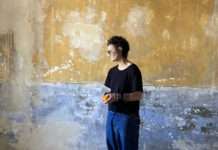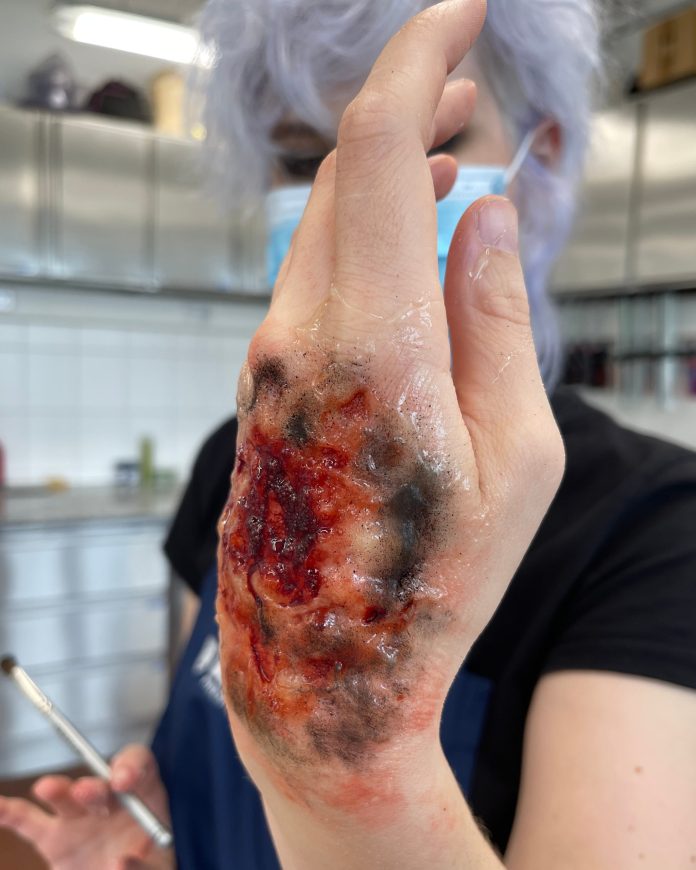Johannesburg, October 2021: For those who enjoy the somewhat ghoulish spirit of late October, it’s almost time to break out the Jack-o’-lanterns and stock up on treats. As Halloween approaches, with dress-up and make-up coming out of hiding, the professional make-up experts at Kryolan SA share a brief history of make-up and special effects.
An art with ancient roots
Make-up has historically been used around the world for thousands of years. It’s been applied by men and women alike for anything from religious festivals to going to war and commemorating life’s big milestones.
A common term for theatrical make-up, “grease-paint”, is rooted in ancient times. It originated when powdered pigments were mixed into a base of wax or grease to form a versatile paste that could be used to create striking effects on facial features and other parts of the body.
The Egyptians would tint their eyelashes or line their eyes with kohl, which was made from soot. The Romans used chalk and white lead to lighten their skin, believing that to appear rich, your skin had to be pale. Unfortunately, this often led to untimely death from lead poisoning or serious health issues. So, out of necessity, a move towards more natural ingredients had to happen.
Curtain call
Early European theatre actors used stage make-up to compensate for the effects of stage lighting, enhance facial features and create interesting characters. In contrast, Victorian era Europe frowned on the use of make-up, seeing it as a symbol of prostitution.
Maksymilian Faktorowicz, also known as Max Factor, pioneered a pressed powder around 1914, as an alternative to using flour to powder noses. When he realised actors were sweating under heavy stage make-up, creating marks and lines, he created a new grease paint that was lighter and would set with the newly developed pressed powder.
In doing this, Faktorowicz inadvertently revolutionised the general use of make-up. In 1938, when Vogue and Goldwyn’s Follies featured his invention, it quickly moved up into the mainstream market.
Bring on the scares
Horror make-up made its auspicious film debut in 1925, in the Phantom of the Opera, with a prosthetic construction that was used to build actor Lon Chaney’s forehead. Black shadows under the eyes and white on his bottom lashes made them appear drooping and larger. “Wrinkles” on his face, created with stage make-up, made him appear more ghost-like.
The Bride of Frankenstein followed suit in 1935. Make-up artist Jack Pierce took two hours on every shoot day to create the iconic scars under the chin of the monster’s bride. These led up into her hair, which was set over a small cage, to form the iconic black and white look. He created a mask of foundation, lipstick and false eyelashes.
1968’s Planet of the Apes revolutionised the use of prosthetics and SFX make-up. And incidentally, this was Kryolan’s big breakthrough on the Hollywood scene. The effects were pioneered by John Chambers and Tom Burman. Chambers based the technique on his work during World War II, assisting disfigured veterans and recreating a “normal” appearance for them.
He spent many hours at Los Angeles Zoo, observing the apes and their facial expressions. The complex and innovative make-up of the film is documented in the acclaimed documentary, Making Apes: The Artists Who Changed Film.
In 1973, The Exorcist used the same style of forehead piece seen in The Phantom of the Opera. Linda Blair’s eyebrows were covered and latex was used to create the cuts on her face. Contact lenses gave her the possessed look and pea soup “vomit” completed the horrifying and unforgettable effect.
Here to stay
The birth of CGI has seen a significant shift in the use of make-up for special effects. While some fear it may become a lost art, prosthetic make-up is still a popular choice. Traditional effects are still the best way to create unusual features, while keeping the character “real looking”. Blood, dirt and scars simply appear more realistic with make-up.
CGI is often used in tandem with make-up, to give a finishing touch. And for now, it looks make-up and the art of transforming actors into unrecognisable characters are not going anywhere.
If you’re looking to get creative with your own Halloween look this October, get some monstrous theatrical inspiration from Kryolan here.
ABOUT KRYOLAN:
Kryolan is a professional make-up brand that was founded in post-war Berlin in 1945 by Arnold Langer, who had a passion for theatre and science. Since then, Kryolan’s collection has grown to include over 16000 products, catering to a wide range of faculties within the make-up industry. Kryolan’s six fields of competence are TV & film, fashion, body art, theatre, SFX and consumer.
For more information on Kryolan, visit https://za.kryolan.com or contact +27 11 786 8598 or
+27 11 786 8521.












